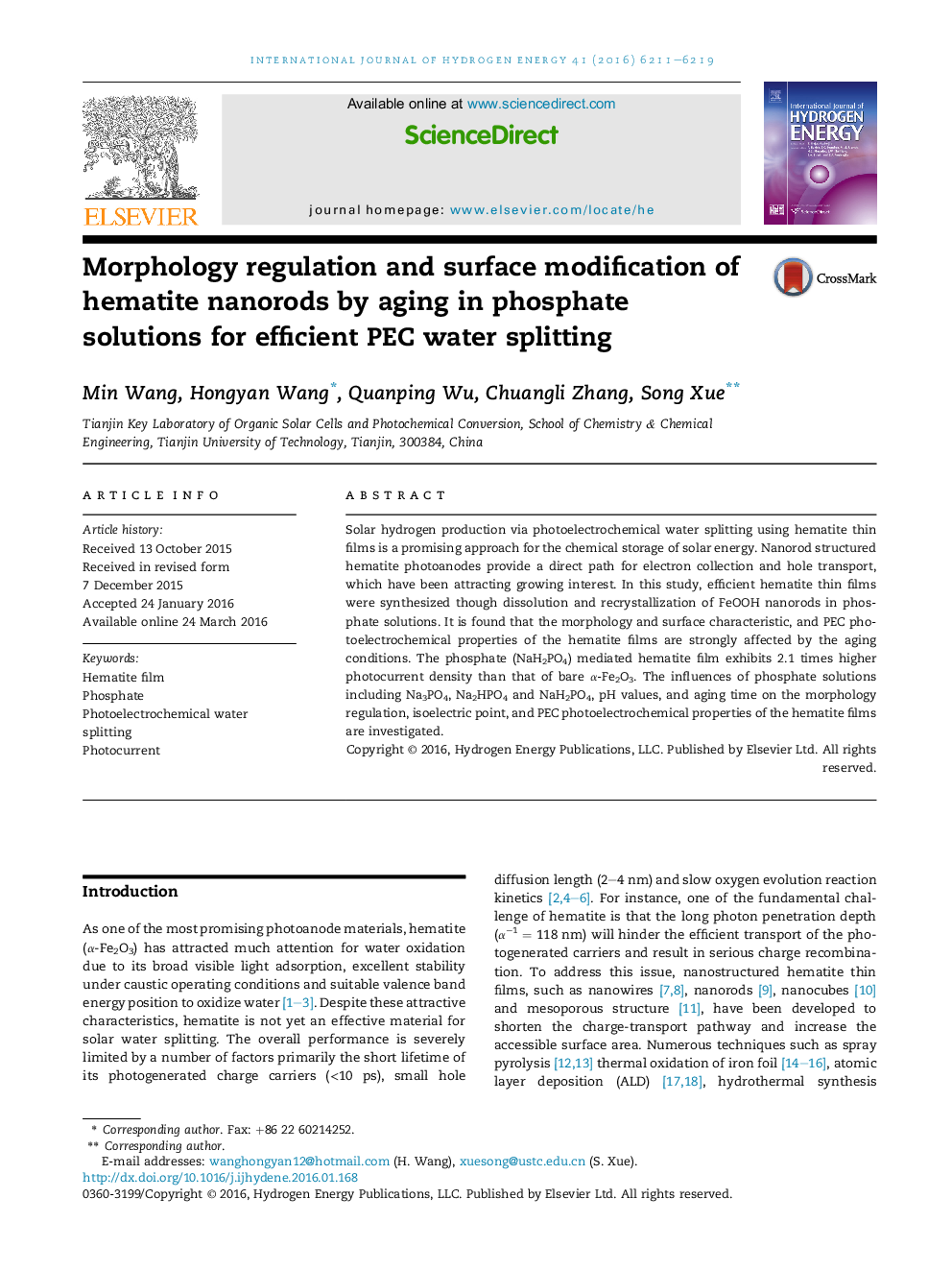| Article ID | Journal | Published Year | Pages | File Type |
|---|---|---|---|---|
| 7711039 | International Journal of Hydrogen Energy | 2016 | 9 Pages |
Abstract
Solar hydrogen production via photoelectrochemical water splitting using hematite thin films is a promising approach for the chemical storage of solar energy. Nanorod structured hematite photoanodes provide a direct path for electron collection and hole transport, which have been attracting growing interest. In this study, efficient hematite thin films were synthesized though dissolution and recrystallization of FeOOH nanorods in phosphate solutions. It is found that the morphology and surface characteristic, and PEC photoelectrochemical properties of the hematite films are strongly affected by the aging conditions. The phosphate (NaH2PO4) mediated hematite film exhibits 2.1 times higher photocurrent density than that of bare α-Fe2O3. The influences of phosphate solutions including Na3PO4, Na2HPO4 and NaH2PO4, pH values, and aging time on the morphology regulation, isoelectric point, and PEC photoelectrochemical properties of the hematite films are investigated.
Related Topics
Physical Sciences and Engineering
Chemistry
Electrochemistry
Authors
Min Wang, Hongyan Wang, Quanping Wu, Chuangli Zhang, Song Xue,
